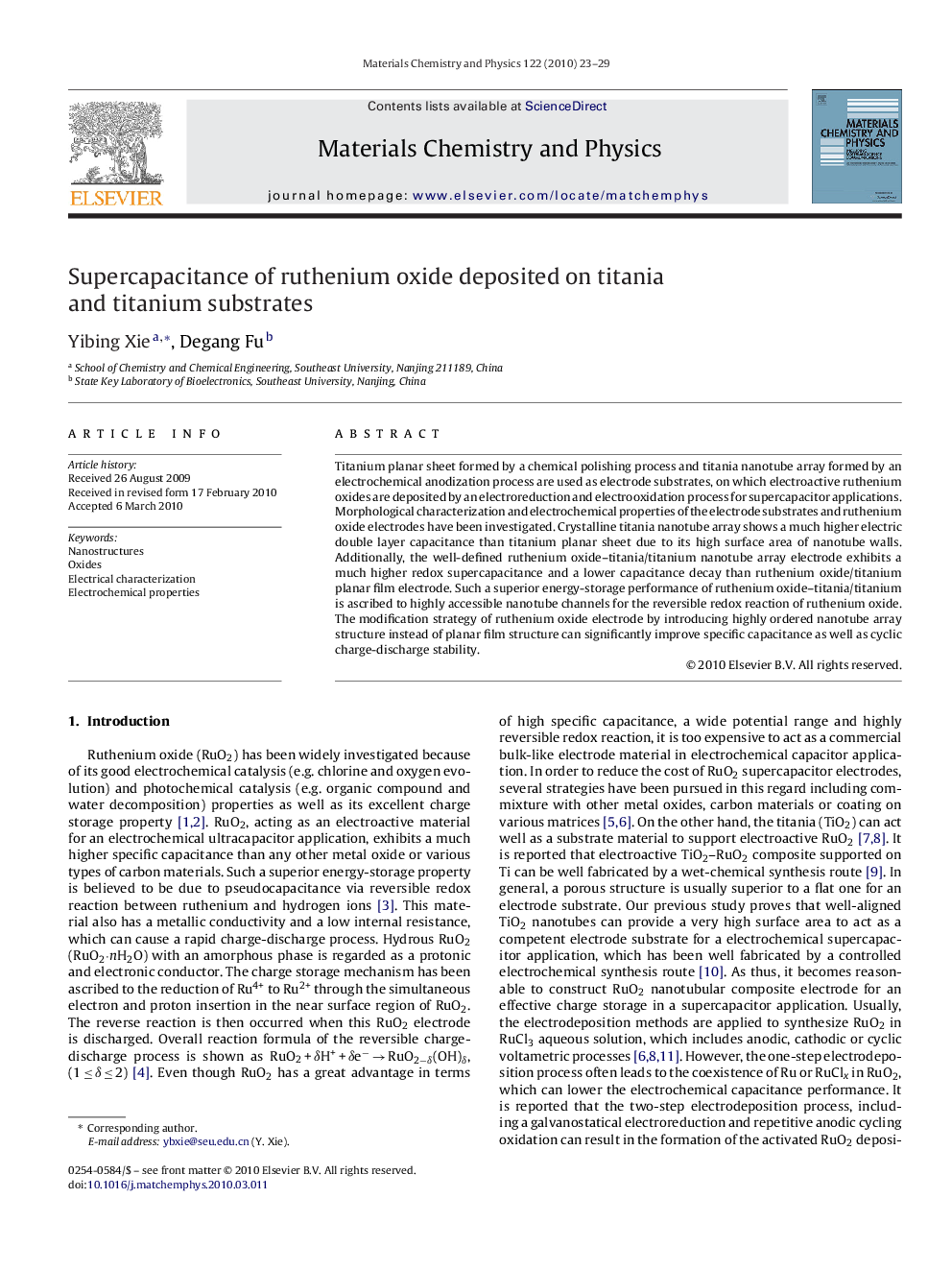| Article ID | Journal | Published Year | Pages | File Type |
|---|---|---|---|---|
| 1525323 | Materials Chemistry and Physics | 2010 | 7 Pages |
Titanium planar sheet formed by a chemical polishing process and titania nanotube array formed by an electrochemical anodization process are used as electrode substrates, on which electroactive ruthenium oxides are deposited by an electroreduction and electrooxidation process for supercapacitor applications. Morphological characterization and electrochemical properties of the electrode substrates and ruthenium oxide electrodes have been investigated. Crystalline titania nanotube array shows a much higher electric double layer capacitance than titanium planar sheet due to its high surface area of nanotube walls. Additionally, the well-defined ruthenium oxide–titania/titanium nanotube array electrode exhibits a much higher redox supercapacitance and a lower capacitance decay than ruthenium oxide/titanium planar film electrode. Such a superior energy-storage performance of ruthenium oxide–titania/titanium is ascribed to highly accessible nanotube channels for the reversible redox reaction of ruthenium oxide. The modification strategy of ruthenium oxide electrode by introducing highly ordered nanotube array structure instead of planar film structure can significantly improve specific capacitance as well as cyclic charge-discharge stability.
